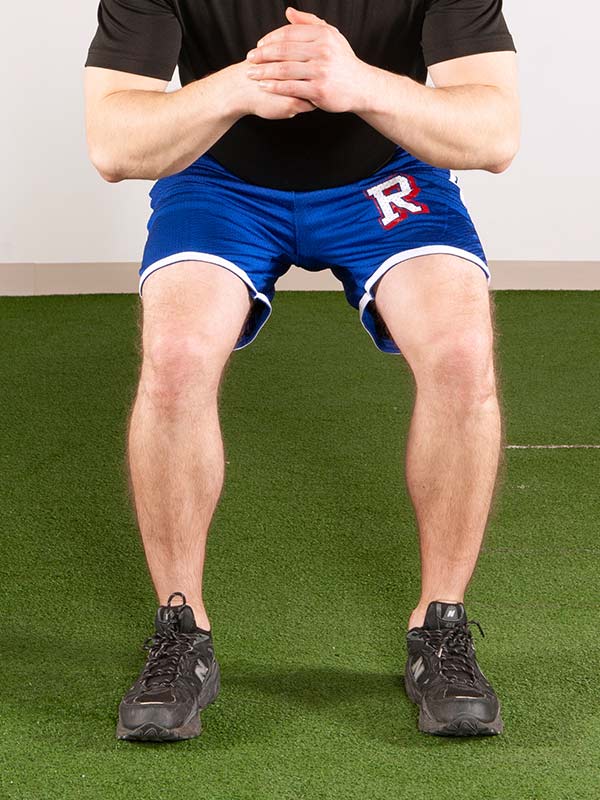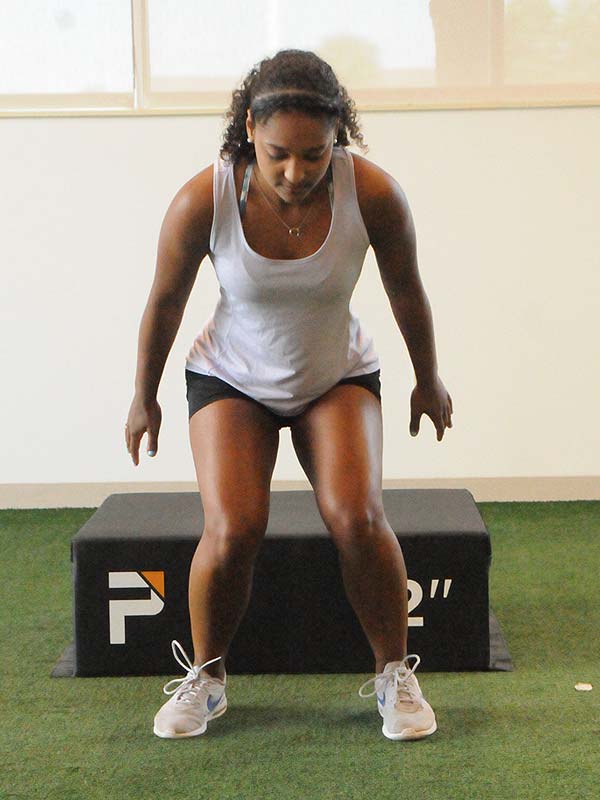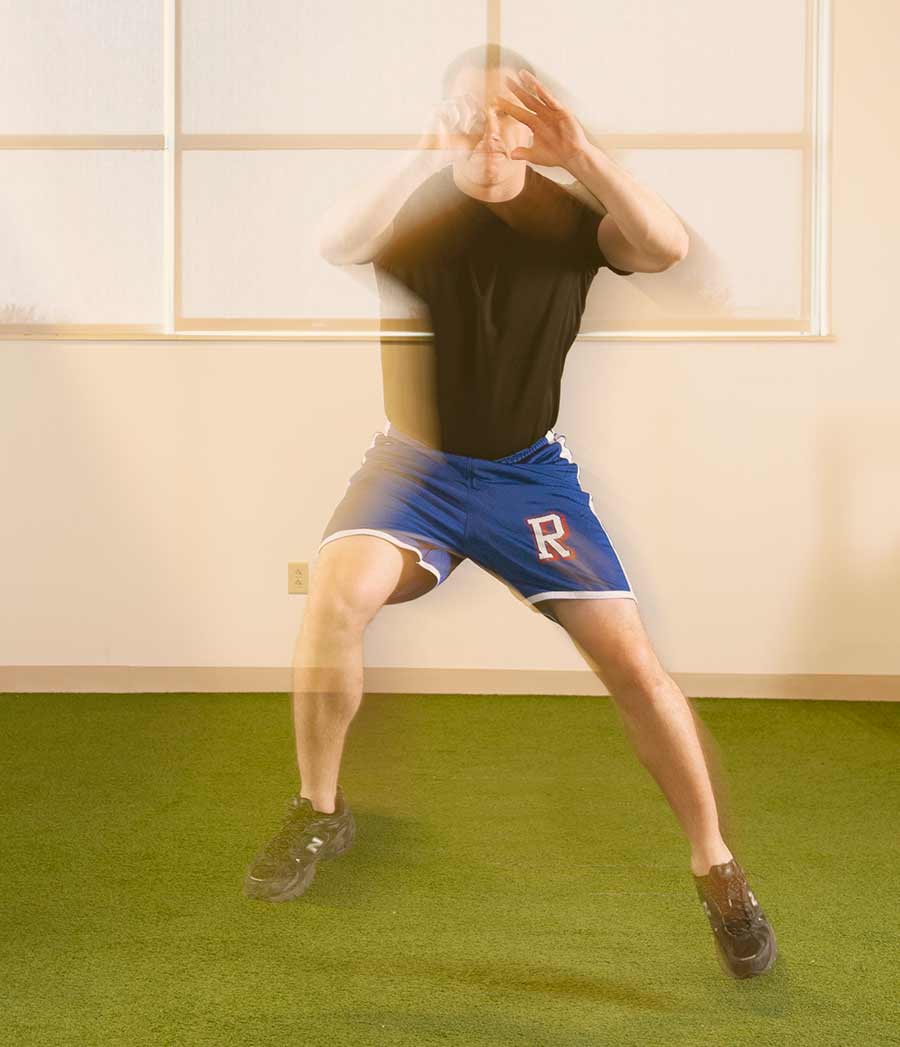Want to participate in or return to a sport with aggressive changes in direction and jumping? Then landing and deceleration training should be part of your everyday workout.
Training your body how to decelerate and land jumps properly reduces the risk of anterior cruciate ligament (ACL) tears. This is true if you’ve never injured your ACL and if you want to avoid a retear after ACL reconstruction surgery.
This training is a major part of all ACL injury prevention and return-to-sport training. Research shows prevention training reduces ACL injuries, and return-to-sport training after surgery reduces retears.
You Can Reduce Your ACL Tear Risk
You can’t change your genetic risk factors or eliminate ACL tear or retear risk. But you can reduce your risk by strengthening and training your body to move differently.
The proper landing technique basics are to land softly and avoid straight-leg landings and inward bend of your knees.
Deceleration training focuses on movements common in sports like stopping, cutting, pivoting and other changes of direction.
For all aggressive direction changes, you want to train the proper form so your body does it automatically. Details, photos and videos are below.
ACL Injury Risk Factors You Can Reduce Through Training
You may be more likely to injure an ACL because of how your body decelerates and lands. For instance, if your knees bend inward naturally.
You can reduce risk factors like these with training. Retrainable ACL injury risk factors include:
- Knock-knees. Some people have a natural inward bend to the knees called knock-knees. Technically known as valgus knees, this is more common in females. (For this and other reasons, females have a higher risk for initial ACL tears. They have the same retear risk as males after ACL reconstruction surgery.)
- A risky “natural” landing posture. Your knees may have neutral alignment standing and running but tend inward when you land.
- Muscle weakness. This includes hip and lower core strength, which supports your legs.
- Poor conditioning. Fatigue increases the risk of injury.
The best way to determine if you have any of these is to be evaluated by a doctor, physical therapist or athletic trainer. These professionals can recommend exercises and sport-specific training.
Every Athlete Can Benefit from Evaluation
NFL Hall of Famer receiver Jerry Rice says an ACL tear is the “worst injury ever.” It is generally agreed to be one of the most common and devastating sports injuries.
One step you can take to reduce your risk of an ACL injury is a pre-participation evaluation. A medical professional who understands ACL injury prevention can determine if you show any risk factors that can be reduced through training.
This is recommended for everyone who takes part in activities with cutting, twisting, pivoting, jumping and other aggressive direction changes. Especially in high-risk sports like football, soccer and basketball, evaluation and specific training can help you reduce your ACL injury or reinjury risk.
How to Land the Right Way
With training, you can learn to land and change direction with lower forces on your knees, especially your ACL. The key is the orientation of your knees.
The correct technique is:
- Land with both legs centered and your knees slightly bent and supported. This is often explained as knees over toes when viewed from in front. If your knee bends inward when you land, training can help you correct this.


- Land softly. Bend your knees as you land to absorb the forces.
- Avoid inward bend of your knees, known as knock-knees. Individuals who land in a knock-kneed position are at a higher risk to tear and retear their ACL. Knock-kneed landing is a result of weakness in your hip muscles and core. You might naturally stand with knees aligned over your toes but land with an inward bend. Training can help you reduce inward bend when landing.
- Do not land straight-legged. When you land on a straight leg, much of the force goes to your ACL. This force can exceed the strength of the ligament, resulting in a tear.
In addition to landing technique, your athletic trainer or physical therapist can recommend exercises specific to the motions you make in your sport.
Strength Before Jumping
As you can read in the ACL injury prevention section, the basic principles of proper landing form are balance, strength and position.
You should confirm your leg and lower core strength before extensive jumping training.
When rehabbing after ACL reconstruction surgery, jumping is not introduced until the final rehabilitation stages. This is easy to understand: nearly three-fourths of ACL tears happen during noncontact deceleration (landing) or change of direction.
If you’ve torn your ACL, research shows doing prehabilitation exercises (before surgery), including quad strengthening, results in better validated patient-reported outcomes two years after surgery.
Your Jump Training Will be a Progression
Your plyometrics and jumping training should progress in steps: you advance when your body has the strength, function and control to handle increased forces.
This can take weeks of training following a stairstep process of stress and recovery. When rehabilitating after ACL surgery, you begin jumping with both legs, then advance to single leg and box jumps.
Maintain proper form. It’s useful to have someone observe whether you are keeping your knees over your toes. Or you can observe in a mirror or record your jumps for review.
Consult with your doctor, physical therapist or athletic trainer before starting any rigorous exercise program.
Deceleration Training is for Everyone
Any change of direction involves deceleration. Nearly three-quarters of ACL injuries are noncontact, involving movement with an improperly positioned knee. For this reason, deceleration training benefits all athletes.
Deceleration training focuses on movements like cutting, twisting and pivoting. It uses different exercises than landing training but can begin at the same time.
Deceleration training focuses on the strength and proper body position to go safely from full speed to a stop or change of direction. As in landing training, you want to train for a slight knee bend and soft landing with good form.
Deceleration exercises include going from a run to a dead stop while maintaining good balance and control. Others recommended by your physical therapist or athletic trainer will emphasize movements for your sport and position, like a side-to-side shuffle for basketball or backpedaling for a defensive back.
If you’re rehabbing a torn ACL, your training will likely begin with abrupt stops from a walk. As your strength improves, your physical therapist or athletic trainer will add movements specific to your sport and position.
For all athletes, the goal is to train proper foot positioning and strengthen your body. Ask your physical therapist or athletic trainer for exercises appropriate for you.
Was This Content Helpful?
Share via:


